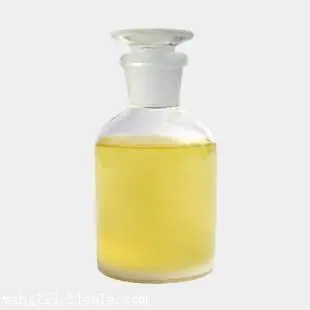- Home
- Products
- Elementary
- Boride Powder
- 3D Printing Powder
- Sulfide Powder
- Oxide Powder
- Carbide powder
- Nitride Powder
- Silicide Powder
- Hydride Powder
- Telluride Powder
- Selenide Powder
- Stearic Acid Series
- Phosphide Powder
- Nanoparticles
- Metal Alloy
- MAX Phase
- Lithium Battery Anode
- Surfactant
- Molecular sieves
- Concrete Admixtures
- Cladding of metals
- News
- Blog
- Contact
- About
Polyglyceryl-10 Oleate CAS 9007-48-1
A colorless or light yellow liquid, Polyglyceryl-10 Oleate is capable of emulsifying, dispersing, stabilizing and controlling viscosity.
The following is a list of the most recent articles about Polyglyceryl-10 oleate :
First, polyglycerol-10 oleate is a non-ionic surfactant synthesized by the esterification of polyglycerol and oleate. Therefore, polyglycerol-10 oleate has both a hydrophilic polysaccharide structure and an oleophilic oleate group. This special structure reduces the surface tension in an aqueous solution to have good wetting, emulsification, and dispersion properties.
Secondly, the solubility of polyglycerol-10 oleate is related to its molecular weight and composition. As the molecular weight of polyglycerol increases, its solubility in water decreases, while the solubility in organic solvents increases. At the same time, the long carbon chain structure of the oleate group makes its solubility in water low, but it shows better solubility in organic solvents. Therefore, polyglycerol-10 oleate can be dissolved in organic and aqueous organic solvents to form a transparent solution.
In addition, the surface activity of polyglycerol-10 oleate enables it to form a single molecular film at the water/oil or oil/water interface, reducing the interfacial tension and thus stabilizing the emulsion and foam. This property makes it widely used in many fields, such as cosmetics, food, pharmaceuticals and pesticides. In addition, polyglycerol-10 oleate also has certain antibacterial properties and biodegradability, which is conducive to its application in environmentally friendly products.
Finally, the compatibility of polyglycerol-10 oleate is worth mentioning. This compatibility makes polyglycerol-10 oleate widely used in the cosmetics, food, pharmaceutical, and pesticide industries.

Technical Parameter
Polyglyceryl-10 Oleate:
| Product Code | Shortname | Purity | HLB | Odor | Appearance |
|---|---|---|---|---|---|
| Polyglyceryl-10 oleate | N/A | 95% | 12 | N/A | The liquid is colorless and light yellow. |
Applications of Polyglyceryl-10 oleate
:
Cosmetics and skin care products: Polyglycerol-10 oleate can be used as the main ingredient or auxiliary ingredient in products such as moisturizers, sunscreen, lip balm, shampoo, body wash and more. In cosmetics, poly glycerine-10 oleate forms a film on the skin's surface, increasing the moisture content and smoothness of the skin while promoting the absorption of nutrients.
Food industry: Polyglycerol-10 oleate is used as a food additive, mainly to improve food's taste, texture and stability. It can be used as an emulsifier, stabilizer, taste agent, etc., added to margarine, ice cream, drinks, condiments, and other foods.
Pharmaceutical industry: Polyglycerol-10 oleate can be used as a carrier of drugs or an adjuvant for drug release to improve the bioavailability and therapeutic effect of drugs. For example, it can be mixed with drugs to make ointments, suppositories, tablets, etc.. It can also be used as a coating or skeleton material for drug release to control the speed and location of drug release.
Pesticide industry: Polyglycerol-10 oleate can be used as an additive or emulsifier of pesticides to improve the control effect and dispersion. It can be mixed with pesticides to make a suspension or emulsion for easy spraying and application. In addition, polyglycerol-10 oleate can also be used as a carrier or sustained-release agent of pesticides, extending the action time of pesticides and reducing environmental pollution.
Production Method of Polyglyceryl-10 oleate :
Esterification: Esterification is one of the most commonly used methods in producing polyglycerol-10 oleate. By the esterification reaction of glycerol and oleic acid, glycerol and oleic acid were polymerized into polyglycerol-10 oleate. In the esterification reaction, acidic catalysts, such as sulfuric acid, phosphoric acid or organic acid, are usually used to promote the reaction. After the reaction, the catalyst and by-products were removed by neutralization, water washing and decolorization, and polyglycerol-10 oleate was obtained.
Transesterification: The transesterification process prepares polyglycerol-10 oleate by a transesterification reaction between glycerol and oil. Polyglycerol-10 oleate was produced by a transesterification reaction using glycerol and oil as raw materials. In transesterification reactions, catalysts such as sodium hydroxide, potassium hydroxide, or sodium methanol are usually used to facilitate the reaction. After the reaction, the catalyst and by-products were removed by neutralization, water washing and decolorization, and polyglycerol-10 oleate was obtained.
Enzyme-catalyzed method: Enzyme-catalyzed method is a method that uses enzymes as catalysts to prepare polyglycerol-10 oleate. The method uses glycerol and oleic acid as raw materials to produce polyglycerol-10 oleate by enzymatic reaction. In enzyme-catalyzed reactions, the enzymes used are usually lipases or esterases, which are highly selective. The enzyme-catalyzed method has the advantages of mild reaction conditions, pure product, and few by-products, but it also has the problem of high production cost.
Packing & Shipping of
Polyglyceryl-10 oleate
:
There are different packing options depending on Sodium Allyl Sulfonate quantities.
Packaging for Sodium Allyl Sulfonate
1kg/bottle. 25kg/barrel. 200kg/barrel.
Shipping of Sodium Allyl Sulfonate
Once payment has been received, goods can be shipped by sea, air or express as soon a possible.
Oleate Polyglycery 10 Properties | |
| Alternative Names | N/A |
| CAS Number | 9007-48-1 |
| Compound Formula | NA |
| Molecular Mass | N/A |
| Appearance | ColoColorless - light yellow liquid |
| Melting Point | N/A |
| Boiling Point | N/A |
| Density | N/A |
| Solubility In H2O | N/A |
| Exact Measure | N/A |
Health & Safety information about Polyglycery-10 oleate | |
| Sign Word | N/A |
| Hazard Statements | N/A |
| Hazard Codes | N/A |
| Risk Codes | N/A |
| Safety Declarations | N/A |
| Transport Information | N/A |
Inquiry us
PREVIOUS Surfactant
CDEA 6501 Coconut Diethanol Amide CAS 68603-42-9
NEXT Surfactant